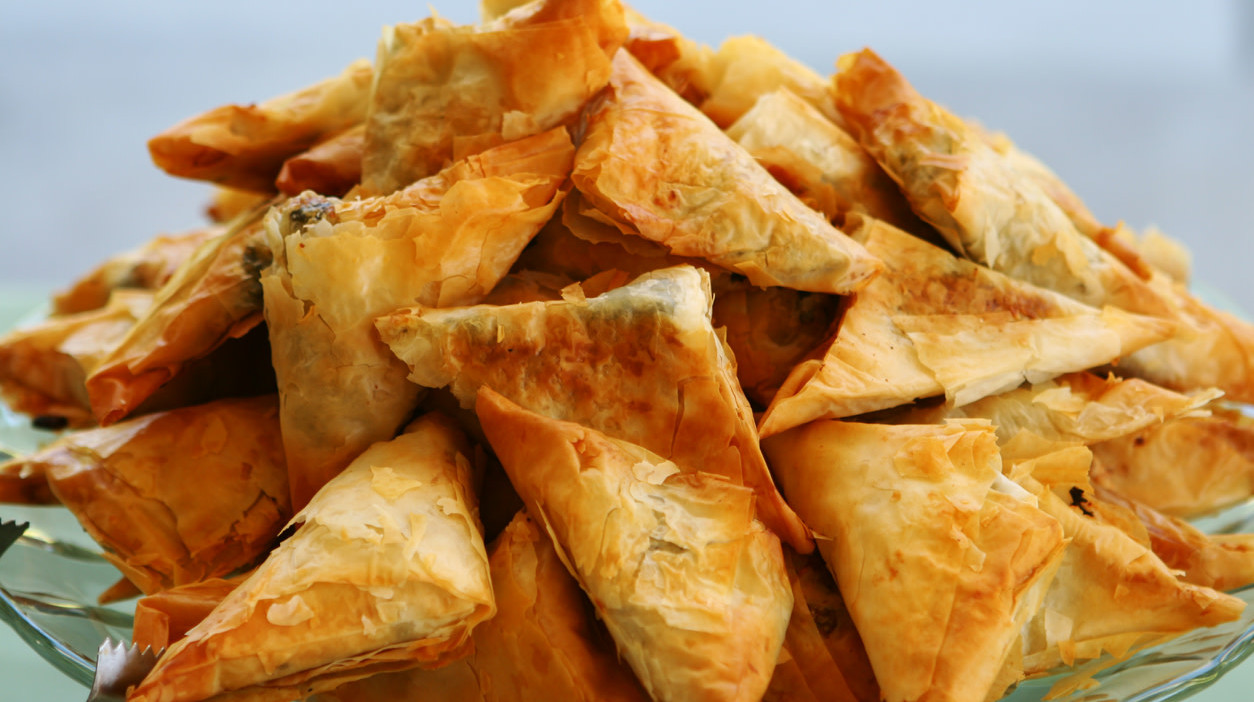Why Limit Your Triangular Purim Pastry To Hamantaschen?
Purim is one of those holidays that my family glossed over when I was growing up. We didn't attend temple or Hebrew school where we would have dressed in festive costumes to attend a public reading of the history, and we didn't have any sort of special dinner.
But the story behind the Jewish holiday of Purim is suddenly feeling a bit more prescient to me these days, and this might just be a holiday we want to bring back in a more fundamental and secular way. After all, the story we gather to read is the tale of a xenophobic, misogynist, power-hungry, anti-Semitic politician who was challenged and ultimately defeated by a strong woman and a smart man who risked their own lives to save the population at large from extermination. It might be worth revisiting right about now. With snacks. After all, Jews traditionally celebrate Purim by sending gifts of food to friends and family and charity to the less fortunate and by eating festive meals.
A big part of any Purim celebration is the baking and eating of hamantaschen. According to legend, Haman, the villain of the Purim story, wore a three-cornered hat, so my people decided to make filled pastries in the shape of a triangle to represent him. And then we ate them. For centuries these sweet treats have been at the center of the Purim festival. Because, as the saying goes: they tried to kill us, we survived, let's eat.
If you want to host your own Purim celebration, there are many recipes for hamantaschen out there, from traditional ones filled with sweet poppy seed paste or fruit jams to modern ones filled with Nutella. But I say when you're throwing down in triumph of good over evil, and the foiling of secret plots to destroy the country and exterminate a whole race of people because—and I am not kidding here—one of them refused to bow down to you, do not limit yourself in the triangular treat department!
You can literally make a whole buffet of filled pastry triangles, and since there is one in nearly every culture, you get to make a delicious celebration of global unity and inclusion. Try some Greek spanakopita and tiropita, the spinach and cheese filled phyllo triangles widely available frozen in the appetizer section of your grocery store. Or a Turkish böreka filled with eggplant. The Somalis and Ethiopians fry up spicy meat-filled sambusas. How about a spicy Indian lentil samosa or a Spanish empanada? The Russians stuff their öçpoçmaq with beef, onions, and potatoes, and Moroccans fill their bisteeya with a sweet and savory chicken filling and top them with cinnamon. And who among us can resist a fried stuffed Chinese wonton?
As for sweets, while a good hamantasch is delicious, you shouldn't limit yourself. Try a North African almond samsa glazed with honey and orange blossom water!
Whether you travel around your city in search of ready-made triangular filled pastries or hit the market for a stash of pre-made puff pastry, pie crust, and phyllo dough and fill and stuff them to your own personal taste, a Purim feast is a good excuse to gather your friends and family and celebrate the idea that when good people risk their personal comfort to act for the benefit of all, evil cannot sustain itself.
